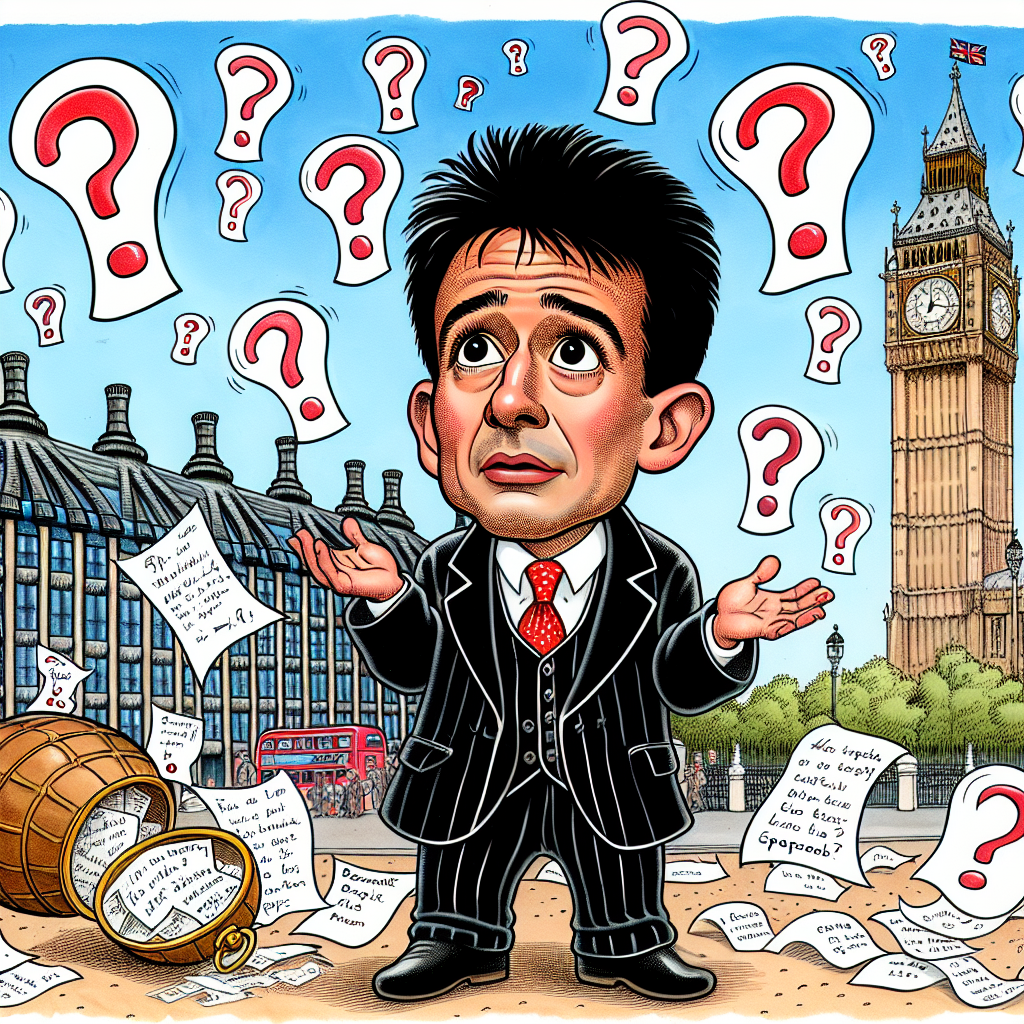Trump's U.K. visit may be haunted by Epstein questions

Alright, friends, let’s do some holistic synergy calibration here—because nothing screams "high-impact geopolitical disruption" quite like the latest Trump U.K. saga entangled with the inescapable Epstein narrative. If you’re tracking the trailing edge of influence vectors shaping global political optics, this story is a fascinating case study of how legacy reputations and shadow networks cascade through multiple nodes of power, never quite getting purged, just more creatively repackaged.
So, here’s the deal: Trump’s recent trip to the U.K. was supposed to be a textbook exercise in statecraft branding—think royal fanfare, ceremonious handshakes, and leadership vibes projected through the classic British regalia filter. Instead, the visit is being heavily gravitationally pulled into the Epstein black hole, where questions about past associations, leaked emails, and some eyebrow-raising doodles are generating more headlines than the state dinner menu. This isn’t just a tabloid saga; it’s emblematic of how unresolved reputational risks can metastasize across political campaigns and even international diplomacy.
From a meta vantage point, the recurring Epstein theme is essentially “legacy infrastructure” dragging down modern brand equity. In Web3 speak, it's like having an immutable blockchain record of undesirable transactions that can’t be scrubbed or hidden by any amount of spin. No matter the gas fees you’re willing to pay, the network remembers. And when a public figure’s history collides with such a heavily weighted context, the sidechains of every public narrative become overloaded with scrutiny and skepticism.
But let’s kick it into next-gen paradigm thinking: how does this moment elucidate the broader challenge of navigating public persona management in a hyper-connected world where memes, leaks, and outrage cycles operate as constant externalities? Trump’s legal counteraction against the Wall Street Journal for publishing a letter with a controversial drawing is a perfect example of trying to regain some control over the narrative data packets, yet it feels like pushing envelope code upstream against a tidal wave of decentralized critique. This is the friction point where legacy PR playbooks meet the disruptive architectures of modern social media ecosystems—a classic deadlock that even a seasoned operator can get bogged down in.
Scaling up, the British context is equally complex. Keir Starmer’s position—initially defending then firing an ambassador linked to Epstein—looks like a stress test for party cohesion under the strain of public accountability demands. Starmer is effectively trying to optimize for both internal stakeholder alignment and external reputation metrics in a crowded signal environment. Yet, despite best efforts, the eruption of far-right rallies and public protests reminds us that controlling the narrative is not a zero-sum game but a highly entropic process influenced by multiple, often conflicting, data points.
Ultimately, this visit underscores a critical insight into the intersection of personal history and political capital: no blockchain, AI algorithm, or PR consultant can successfully “mint” a clean slate when past compromised transactions remain in the ledger. The web of Epstein-linked controversies acts like a persistent smart contract—immutable, verifiable, and game-changing in how stakeholders engage with the principal entities involved.
From a cultural dynamics angle, there’s a fascinating tension between the glittering optics of power (state visits, pageantry) and the chaotic dissonance of underlying scandals. It’s the ultimate UX issue for modern leadership personas trying to onboard public trust while legacy vulnerabilities lurk under the hood. The question isn’t whether these controversies exist—the question is how they influence the conversion rates of public sentiment to political legitimacy. And as we've seen, even the most curated brand journeys can encounter hostile forks in their roadmap when the underlying data includes controversial code segments.
This episode also serves as an instructive example of the limits of traditional media litigation in an age dominated by “attention economics.” Trump’s lawsuit is less about legal victory and more about seeding a counter-narrative to battle in the memetic arena. However, when facts, leaks, and public outrage create a high-velocity feedback loop, trying to deploy slow, archaic dispute resolution processes feels like launching a vampire drone in a swarm of agile autonomous entities—fascinating, yet ill-fated.
At the end of the day, this confluence of scandal and statecraft is a masterclass in brand risk management failures and the inexorable persistence of legacy data. In Web3 speak, you can’t delete your transaction history; you can only build new chains and hope your community focuses there. However, that’s assuming your community buys into your new consensus rules—something neither Trump nor his UK political counterparts can take for granted.
So, while the pomp and circumstance of a London state visit symbolize the idealized front-end interface of political leadership, backstage, the blockchain of real-world reputation and accountability keeps pumping out logs no gloss can hide. And in this interconnected, memetic information age, the ghosts of past associations aren’t just haunting politicians—they’re rewriting the entire UX of governance and public trust.
Keep your FOMO in check, because this saga’s smart contracts are far from fully executed.

